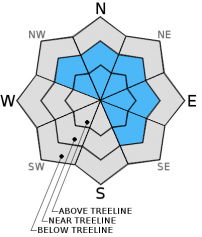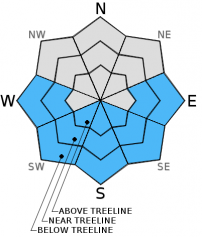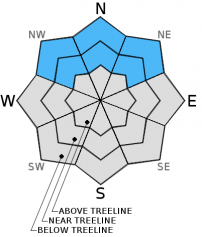| Tuesday | Tuesday Night | Wednesday | |
|---|---|---|---|
| Weather: | Mostly cloudy to partly sunny | Mostly cloudy | Cloudy |
| Temperatures: | 37 to 44 deg. F. | 23 to 30 deg. F. | 40 to 48 deg. F. |
| Mid Slope Winds: | Southwest | Southwest | Southwest |
| Wind Speed: | 10 to 15 mph with gusts to 25 mph | 15 to 20 mph with gusts to 40 mph | 15 to 30 mph with gusts to 50 mph |
| Expected snowfall: | 0 | 0 | 0 |
| Tuesday | Tuesday Night | Wednesday | |
|---|---|---|---|
| Weather: | Mostly cloudy to partly sunny | Mostly cloudy | Cloudy |
| Temperatures: | 32 to 40 deg. F. | 24 to 29 deg. F. | 34 to 42 deg. F. |
| Ridge Top Winds: | Southwest | West | West |
| Wind Speed: | 15 to 25 mph with gusts to 35 mph | 30 to 45 mph with gusts to 65 mph | 55 to 75 mph with gusts at 80 to 100 mph |
| Expected snowfall: | 0 | 0 | 0 |




























